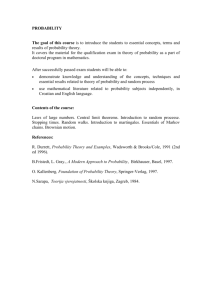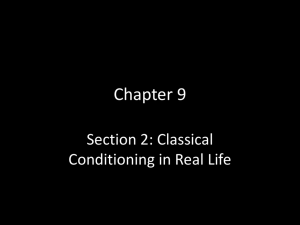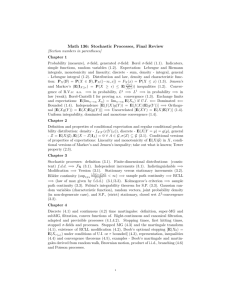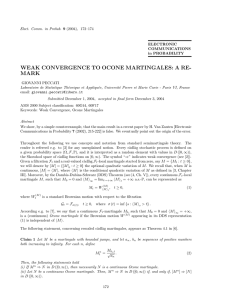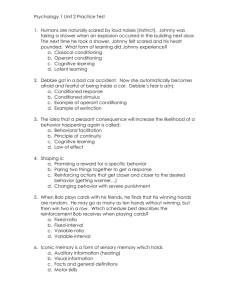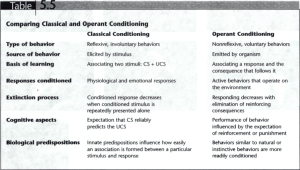Conditioned martingales Nicolas Perkowski Johannes Ruf
advertisement
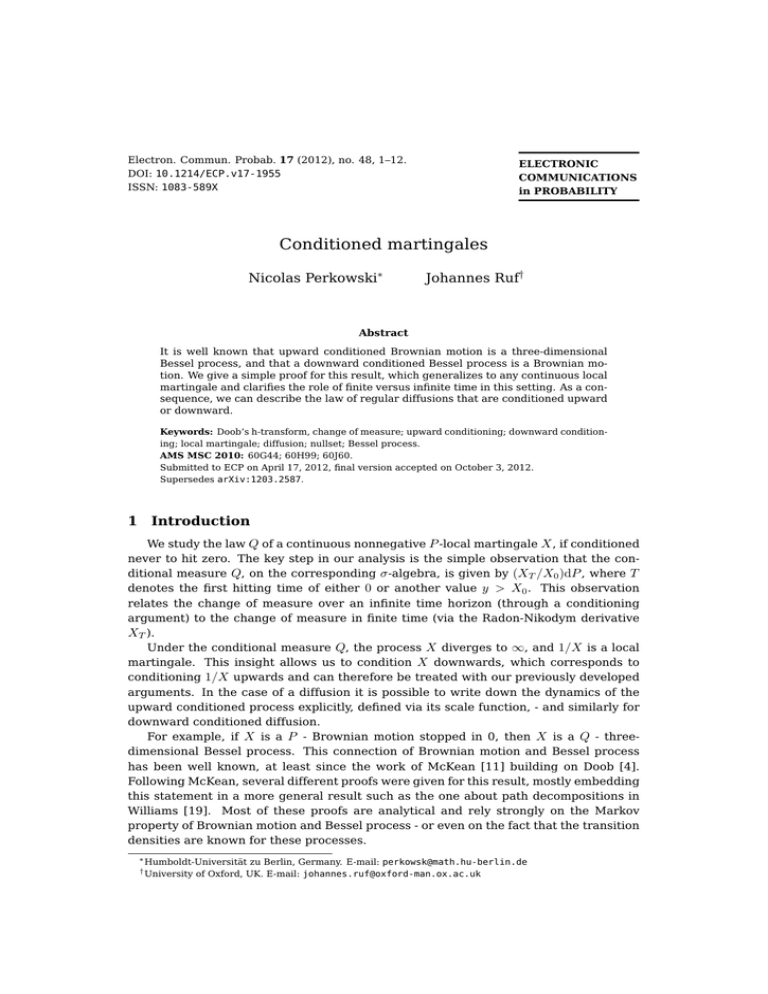
Electron. Commun. Probab. 17 (2012), no. 48, 1–12.
DOI: 10.1214/ECP.v17-1955
ISSN: 1083-589X
ELECTRONIC
COMMUNICATIONS
in PROBABILITY
Conditioned martingales
Nicolas Perkowski∗
Johannes Ruf†
Abstract
It is well known that upward conditioned Brownian motion is a three-dimensional
Bessel process, and that a downward conditioned Bessel process is a Brownian motion. We give a simple proof for this result, which generalizes to any continuous local
martingale and clarifies the role of finite versus infinite time in this setting. As a consequence, we can describe the law of regular diffusions that are conditioned upward
or downward.
Keywords: Doob’s h-transform, change of measure; upward conditioning; downward conditioning; local martingale; diffusion; nullset; Bessel process.
AMS MSC 2010: 60G44; 60H99; 60J60.
Submitted to ECP on April 17, 2012, final version accepted on October 3, 2012.
Supersedes arXiv:1203.2587.
1
Introduction
We study the law Q of a continuous nonnegative P -local martingale X , if conditioned
never to hit zero. The key step in our analysis is the simple observation that the conditional measure Q, on the corresponding σ -algebra, is given by (XT /X0 )dP , where T
denotes the first hitting time of either 0 or another value y > X0 . This observation
relates the change of measure over an infinite time horizon (through a conditioning
argument) to the change of measure in finite time (via the Radon-Nikodym derivative
XT ).
Under the conditional measure Q, the process X diverges to ∞, and 1/X is a local
martingale. This insight allows us to condition X downwards, which corresponds to
conditioning 1/X upwards and can therefore be treated with our previously developed
arguments. In the case of a diffusion it is possible to write down the dynamics of the
upward conditioned process explicitly, defined via its scale function, - and similarly for
downward conditioned diffusion.
For example, if X is a P - Brownian motion stopped in 0, then X is a Q - threedimensional Bessel process. This connection of Brownian motion and Bessel process
has been well known, at least since the work of McKean [11] building on Doob [4].
Following McKean, several different proofs were given for this result, mostly embedding
this statement in a more general result such as the one about path decompositions in
Williams [19]. Most of these proofs are analytical and rely strongly on the Markov
property of Brownian motion and Bessel process - or even on the fact that the transition
densities are known for these processes.
∗ Humboldt-Universität zu Berlin, Germany. E-mail: perkowsk@math.hu-berlin.de
† University of Oxford, UK. E-mail: johannes.ruf@oxford-man.ox.ac.uk
Conditioned martingales
As the study of the law of upward and downward conditioned processes has usually
not been the main focus of these papers, results have, to the best of our knowledge,
not been proven in the full generality of this paper, and the underlying arguments were
often only indirect. Our proof uses only elementary arguments, it is probabilistic, and
works for continuous local martingales and certain jump processes. We show that in
finite time it is not possible to obtain a Bessel process by conditioning a Brownian
motion not to hit zero and we point out that conditioning a Brownian motion upward
and conditioning a Bessel process downward can be understood using the same result.
In Subsection 2.1 we treat the case of upward conditioning of local martingales and
in Subsection 2.2 the case of downward conditioning. In Section 3 we study the implications of these results for diffusions. In Appendix A we illustrate that conditioning on a
nullset (such as the Brownian motion never hitting zero) is highly sensitive with respect
to the approximating sequence of sets. Appendix B contains the slightly technical proof
of Proposition 3.2, which describes the change of dynamics of a diffusion after a change
of measure. In Appendix C we study a class of jump processes that can be treated with
our methods.
Review of existing literature
The connection of Brownian motion and the three-dimensional Bessel process has been
studied in several important and celebrated papers. Most of these studies have focused
on more general statements than this connection only. To provide a complete list of
references is beyond this note. In the following paragraphs, we try to give an overview
of some of the most relevant and influential work in this area.
For a Markov process X , Doob [4] studies its h-transform, where h denotes an excessive function such that, in particular, h(X) is a supermartingale. Using h(X)/h(X0 )
as a Radon-Nikodym density, a new (sub-probability) measure is constructed. Doob
shows, among many other results, that, if h is harmonic (and additionally “minimal,” as
defined therein), the process X converges under the new measure to the points on the
extended real line where h takes the value infinity. In this sense, changing the measure
corresponds to conditioning the process to the event that X converges to these points.
For example, if X is Brownian motion started in 1, then h(x) = x is harmonic and leads
to a probability measure, under which X , now distributed as a Bessel process, tends
to infinity. Our results also yield this observation; furthermore they contain the case of
non-Markovian processes X that are nonnegative local martingales only.
An analytic proof of the fact that upward conditioned Brownian motion is a threedimensional Bessel process is given in McKean’s work [11] on Brownian excursions. He
shows that if W is a Brownian motion started in 1, if B ∈ Fs , where Fs is the σ -algebra
generated by W up to time s for some s > 0, and if T0 is the hitting time of 0, then
P (W ∈ B|T0 > t) → P (X ∈ B) as t ↑ ∞, where X is a three-dimensional Bessel process.
The proof is based on techniques from partial differential equations. In that article, also
a path decomposition is given for excursions of Brownian motion in terms of two Bessel
processes, one run forward in time, and the other one run backward. McKean already
generalizes all these results to regular diffusions.
Knight [10] computes the dynamics of Brownian motion conditioned to stay either in
the interval [−a, a] or (−∞, a] for some a > 0 and thus, derives also the Bessel dynamics.
To obtain these results, Knight uses a very astute argument based on inverting Brownian local time. He moreover illustrates the complications arising from conditioning on
nullsets by providing an insightful example; we shall give another example based on a
direct argument, without the necessity of any computations, in Appendix A to illustrate
this point further.
ECP 17 (2012), paper 48.
ecp.ejpecp.org
Page 2/12
Conditioned martingales
In his seminal paper on path decompositions, Williams [19] shows that Brownian
motion conditioned not to hit zero corresponds to the Bessel process. His results extend to diffusions and reach far beyond this observation. For example, he shows that
“stitching” a Brownian motion up to a certain stopping time and a three-dimensional
Bessel process together yields another Bessel process. In Pitman and Yor [15] this approach is generalized to killed diffusions. A diffusion process is killed with constant rate
and conditioned to hit infinity before the killing time. This allows the interpretation of a
two-parameter Bessel process as an upward conditioned one-parameter Bessel process.
Pitman [14] proves essentially Lemma 2.1 of this paper in the Brownian case. This
is achieved by approximating the continuous processes by random walks, which can be
counted. For the continuous case, the statement then follows by a weak convergence
argument. The main result of that article is Pitman’s famous theorem that 2W ∗ − W is
a Bessel process if W is a Brownian motion and W ∗ its running maximum.
Baudoin [1] takes a different approach. Given a Brownian motion, a functional Y of
its path and a distribution ν , Baudoin constructs a probability measure under which Y is
distributed as ν . The recent monograph by Roynette and Yor [17] studies penalizations
of Brownian paths, which can be understood as a generalization of conditioned Brownian motion. Under the penalized measure, the coordinate process can have radically
different behavior than under the Wiener measure. In our example it does not hit zero.
In Roynette and Yor [17] there is an example of a penalized measure under which the
supremum process stays almost surely bounded.
2
General case: continuous local martingales
Let Ω = Cabs := Cabs (R+ , [0, ∞]) be the space of [0, ∞]-valued functions ω that
are absorbed in 0 and ∞, and that are continuous on [0, T∞ (ω)), where T∞ (ω) denotes the first hitting time of {∞} by ω , to be specified below. Let X be the coordinate process, that is, Xt (ω) = ω(t). Define, for sake of notational simplicity, X∞ :=
p
lim supt↑∞ Xt lim inf t↑∞ Xt (with ∞ · 0 := 1).1 Denote the canonical filtration by (Ft )t≥0
with Ft = σ(Xs : s ≤ t), and write F = ∨t≥0 Ft . For all a ∈ [0, ∞], define Ta as the first
hitting time of {a}, to wit,
Ta = inf{t ∈ [0, ∞] : Xt = a}
(2.1)
with inf ∅ := T, representing a time “beyond infinity.” The introduction of T allows for
a unified approach to treat examples like geometric Brownian motion. We shall extend
the natural ordering to [0, ∞] ∪ {T} by t < T for all t ∈ [0, ∞]. For all stopping times τ ,
define the σ -algebras Fτ as
Fτ = {A ∈ F : A ∩ {τ ≤ t} ∈ Ft ∀t ∈ [0, ∞)} = σ(Xsτ : s < ∞) = σ(Xsτ ∧T0 : s < ∞),
where X τ ≡ X τ ∧T0 is the process X stopped at the stopping time τ . Let P be a probability measure on (Ω, F), such that X is a nonnegative local martingale with P (X0 = 1) = 1.
2.1
Upward conditioning
In this section, we study the law of the local martingale X conditioned never to hit
zero. This event can be expressed as
{T0 = T} =
\
{Ta ≤ T0 } ⊃
a∈[0,∞)
[
{Ta ∧ T0 = T}.
(2.2)
a∈(0,∞]
1
The definition of X∞ is not further relevant as X converges (or diverges to infinity) almost surely under all
measures that we shall consider. We chose this definition of X∞ since it commutes with taking the reciprocal
1/X∞ .
ECP 17 (2012), paper 48.
ecp.ejpecp.org
Page 3/12
Conditioned martingales
The core of this article is the following simple observation:
Lemma 2.1 (Upward conditioning). If P (Ta ∧ T0 < T) = 1 for some a ∈ (1, ∞), we have
that
dP (·|Ta ≤ T0 ) = XTa dP.
Proof. Note that X Ta is bounded and thus a uniformly integrable martingale. In particular,
Ta
1 = EP (X∞
) = aP (Ta ≤ T0 ) + 0,
which implies that, for all A ∈ F ,
P (A|Ta ≤ T0 ) =
P (A ∩ {Ta ≤ T0 })
P (A ∩ {Ta ≤ T0 })
Ta
= EP X∞
=
1A ,
1
P (Ta ≤ T0 )
a
yielding the statement.
Three different probability measures
Consider three possible probability measures:
1. The local martingale X introduces an h-transform Q of P . This is the unique probability measure Q on (Ω, F) that satisfies dQ|Fτ = Xτ dP |Fτ for all stopping times
τ for which X τ is a uniformly integrable martingale. The probability measure Q
is called the Föllmer measure of X , see Föllmer [6] and Meyer [12].2 Note that
the construction of this measure does not require the density process X to be the
canonical process on Ω - the extension only relies on the topological structure of
Ω = Cabs . This will be important later, when we consider diffusions. We remark
that, in the case of X being a P -martingale, we could also use a standard extension
theorem, such as Theorem 1.3.5 in Stroock and Varadhan [18].
2. If P (T0 = T) = 0, Lemma 2.1 in conjunction with (2.2) directly yields the consistency of the family of probability measures {P (·|Ta ≤ T0 )}a>1 on the filtration
(FTa )a>1 . By Föllmer’s construction again, there exists a unique probability meae on (Ω, F), such that Q|
e F = P (·|Ta ≤ T0 )|F .
sure Q
Ta
Ta
b = P (·|T0 = T) via the
3. If P (T0 = T) > 0, we can define the probability measure Q(·)
Radon-Nikodym derivative 1{T0 =T} /P (T0 = T).
Since in the case P (T0 = T) = 0, we have {Ta ≤ T0 } =P −a.s. {Ta < T0 } for all a ∈
e is also called upward conditioned measure since it is constructed
(0, ∞], the measure Q
by iteratively conditioning the process X to hit any level a before hitting 0.
Relationship of probability measures
We are now ready to relate the three probability measures constructed above:
Theorem 2.2 (Identity of measures). Set b := P (T0 = T) = P (X∞ > 0). If b = 0, then
e . If b > 0, then Q = Q
b if and only if X is a uniformly integrable martingale with
Q=Q
P (X∞ ∈ {0, 1/b}) = 1.
2
See also Delbaen and Schachermayer [3] for a discussion of this measure, Pal and Protter [13] for the
extension to infinite time horizons and Carr, Fisher, and Ruf [2] for allowing nonnegative local martingales.
ECP 17 (2012), paper 48.
ecp.ejpecp.org
Page 4/12
Conditioned martingales
e satisfy, for all a > 1,
Proof. First, consider the case b = 0. Both Q and Q
e F = XT dP |F = dQ|F .
dQ|
a
Ta
Ta
Ta
e agree on ∨a>1 FT = ∨a>1 σ(XtTa : t ≥ 0) = F .
Thus Q and Q
a
b and dQ/dP
b
Next, consider the case b > 0. Then, Q = Q
|Ft ≤ 1/b imply that Xt ≤ 1/b,
yielding that X is a uniformly integrable martingale with X∞ = dQ/dP ∈ {0, 1/b}. For
the reverse direction, observe that X∞ = 1{T0 =T} /b. This observation together with its
uniform integrability completes the proof.
This theorem implies, in particular, that in finite time the three-dimensional Bessel
process cannot be obtained from conditioning Brownian motion not to hit zero. However, over finite time-horizons, a Bessel-process can be constructed via the h-transform
XT dP , when X is P -Brownian motion started in 1 and stopped in 0. Over infinite
time-horizons, one has two choices; the first one is using an extension theorem for the
h-transforms, the second one is conditioning X not to hit 0 by approximating this nullset
by the sequence of events that X hits any a > 0 before it hits 0.
Remark 2.3 (Conditioning on nullsets). We remark that the interpretation of the meae as P conditioned on a nullset requires specifying an approximating sequence of
sure Q
that nullset. In Appendix A we illustrate this subtle but important point.
Remark 2.4 (The trans-infinite time T). The introduction of T in this subsection allows
e and to show its equivalence to the
us to introduce the upward-conditioned measure Q
h-transform Q if X converges to zero but not necessarily hits zero in finite time, such
as P -geometric Brownian motion. If one is only interested in processes as, say, stopped
Brownian motion, then one could formulate all results in this subsection in the standard
way when inf ∅ := ∞ in (2.1). One would then need to exchange T by ∞ throughout
this subsection; in particular, one would have to assume in Lemma 2.1 that P (Ta ∧ T0 <
∞) = 1 and replace the condition P (T0 = T) = 0 by P (T0 = ∞) = 0 for the construction
e.
of the upward-conditioned measure Q
We note that the arguments of this section can be extended to certain jump processes. In Appendix C we treat a simple random walk example to illustrate this observation.
2.2
Downward conditioning
In this subsection, we consider the converse case of conditioning X downward instead of upward. Towards this end, we first provide a well-known result; see for example
[2]. For sake of completeness, we provide a direct proof:
Lemma 2.5 (Local martingality of 1/X ). Under the h-transformed measure Q, the process 1/X is a nonnegative local martingale and Q(T∞ = T) = EP [X∞ ].
ECP 17 (2012), paper 48.
ecp.ejpecp.org
Page 5/12
Conditioned martingales
Proof. Observe that
EQ
1A
!
1
T
1/n
Xt+s
= lim EQ
1A∩{Tm >t}
m↑∞
= lim EP
1A∩{Tm >t}
m↑∞
= lim EP
1A∩{Tm >t}
m↑∞
= lim EQ
1A∩{Tm >t}
m↑∞
= EQ
1A
1
!
1
T
1/n
Xt+s
T
Tm
Xt+s
∧Tm
T
T
1/n
Xt+s
+ EQ
1A∩{T∞ ≤t}
1
XtTm
∧Tm
+ EQ
1A∩{T∞ ≤t}
!
1
+ EQ
T
∧Tm
Xt 1/n
1A∩{T∞ ≤t}
1
!
T
Xt 1/n
!
1
Xt 1/n
1A∩{T∞ ≤t}
!
1
1/n
Xt+s
+ EQ
∧Tm
!
1
1
!
T
Xt 1/n
!
T
Xt 1/n
!
T
Xt 1/n
for all A ∈ Ft and s, t ≥ 0, where in the third equality we considered the two events
{T1/n ≤ t} and {T1/n > t} separately and used the P -martingality of X Tm after conditioning on Ft and FT1/n , respectively - note that A ∩ {Tm > t} ∩ {T1/n > t} ∈ FT1/n .
The local martingality of 1/X then follows from
Q
lim T1/n < ∞ = lim Q lim T1/n < Tm ∧ ∞
n→∞
n→∞
m↑∞
Tm
= lim EP 1{limn→∞ T1/n <Tm } X∞
= 0.
m↑∞
Therefore, 1/X converges Q-almost surely to some random variable 1/X∞ . We observe
that
Tm
)
Q(T∞ = T) = 1 − lim Q(Tm < ∞) = 1 − lim EP (1{Tm <∞} X∞
m↑∞
m↑∞
= lim EP (1{Tm ≥∞} X∞ ) = EP (X∞ ),
m↑∞
where we use that X converges P -almost surely.
The last lemma directly implies the following observation:
Corollary 2.6 (Mutual singularity). We have P (X∞ = 0) = 1 if and only if Q(X∞ =
∞) = 1.
This observation is consistent with our understanding that either condition implies
that the two measures are supported on two disjoint sets. Corollary 2.6 is also consise,
tent with Theorem 2.2, which yields that P (X∞ = 0) = 1 implies the identity Q = Q
e
where Q denotes the upward conditioned measure.
Lemma 2.5 indicates that we can condition X downward under Q, corresponding to
conditioning 1/X upward. The proof of the next result is exactly along the lines of the
arguments in Subsection 2.1; however, now with the Q-local martingale 1/X taking the
place of the P -local martingale X :
Theorem 2.7 (Downward conditioning). If b of Thereom 2.2 satisfies b = 0, then
dQ(·|T1/a ≤ T∞ ) =
1
XT1/a
dQ
for all a > 1. In particular, there exists a unique probability measure Pe , such that
Pe|FT
= Q(·|T1/a < T); in fact, Pe = P .
1/a
ECP 17 (2012), paper 48.
ecp.ejpecp.org
Page 6/12
Conditioned martingales
3
Diffusions
In this section, we apply Theorems 2.2 and 2.7 to diffusions.
3.1
Definition and h-transform for diffusions
We call diffusion any time-homogeneous strong Markov process Y : Cabs × [0, ∞) →
[l, r] with continuous paths in a possibly infinite interval [l, r] with −∞ ≤ l < r ≤ ∞.
Note that we explicitly allow Y to take the values l and r ; we stop Y once it hits the
boundary of [l, r]. We define τa for all a ∈ [l, r] as in (2.1) with X replaced by Y . We
denote the probability measure under which Y0 = y ∈ [l, r] by Py .
Since Y is Markovian it has an infinitesimal generator (see page 161 in Ethier
and Kurtz [5]). As we do not assume any regularity of the semigroup of Y , we find
it convenient to work with the following extended infinitesimal generator: A continuous function f : [l, r] → R ∪ {−∞, ∞} with f |R ∈ R is in the domain of the extended infinitesimal generator L of Y if there exists a continuous function g : [l, r] →
R ∪ {−∞, ∞} with g|R ∈ R, and an increasing sequence of stopping times {ρn }n∈N , such
that Py (limn→∞ ρn ≥ τl ∧ τr ) = 1 and
f (Y·ρn ) − f (y) −
Z
·∧ρn
g(Ys )ds
0
is a Py -martingale for all y ∈ (l, r). In that case we write f ∈ dom(L) and Lf = g .
Throughout this section we shall work with a regular diffusion Y ; that is, for all
y, z ∈ (l, r) we have that Py (τz < ∞) > 0. In that case there always exists a continuous,
strictly increasing function s : (l, r) → R∪{−∞, ∞}, uniquely determined up to an affine
transformation, such that s(Y ) is a local martingale (see Propositions VII.3.2 and VII.3.5
in Revuz and Yor [16]). We call every such s a scale function for Y , and we extend its
domain to [l, r] by taking limits. The next result summarizes Proposition VII.3.2 in [16]
and describes the relationship of the scale function s and the limiting behaviour of Y :
Lemma 3.1 (Scale function). We have that
1. Py (τl = T) = 0 for one (and then for all) y ∈ (l, r) if and only if s(l) ∈ R and
s(r) = ∞;
2. Py (τr = T) = 0 for one (and then for all) y ∈ (l, r) if and only if s(l) = −∞ and
s(r) ∈ R;
3. Py (τl ∧ τr = T) = 0 and Py (τl < T) ∈ (0, 1) for one (and then for all) y ∈ (l, r) if and
only if s(l) ∈ R and s(r) ∈ R.
Throughout this section, we shall work with the standing assumption that the scale
function s satisfies s(l) > −∞ (Assumption L) or s(r) < ∞ (Assumption R). Without
loss of generality, we shall assume that then s(l) = 0 or s(r) = 0, respectively, and that
F = Fτl ∧τr .
Since by assumption s(Y ) is a local martingale, it defines, under each Py , a Föllmer
measure Qy as in Section 2, where we would set X := s(Y )/s(y), for all y ∈ [l, r] (with
0/0 := ∞/∞ := 1). The next proposition illustrates how the extended infinitesimal
generators of Y under Py and Qy are related:
Proposition 3.2 (h-transform for diffusions). The process Y is a regular diffusion under the probability measures {Qy }y∈[l,r] . Its extended infinitesimal generator Ls under
{Qy }y∈[l,r] is given by dom(Ls ) = {ϕ : sϕ ∈ dom(L)} and
Ls ϕ(y) =
1
L[sϕ](y).
s(y)
ECP 17 (2012), paper 48.
ecp.ejpecp.org
Page 7/12
Conditioned martingales
The proof of this proposition is technical and therefore postponed to Appendix B.
The following observation is a direct consequence of Lemma 2.5 and the fact that Y is
a regular diffusion under the probability measures {Qy }y∈[l,r] :
Lemma 3.3 (Scale function for h-transform). Under {Qy }y∈[l,r] , the function s
e(·) =
−1/s(·) is, with the appropriate definition of 1/0, a scale function for Y with se(l) = −∞,
se(r) ∈ R under Assumption L and with se(r) = ∞, se(l) ∈ R under Assumption R.
3.2
Conditioned diffusions
We now are ready to formulate and prove a version of the statements of Section 2
for diffusions:
Corollary 3.4 (Conditioning of diffusions). Fix y ∈ (l, r) and make Assumption L.
1. Suppose that Py (τl = T) = 0, which is equivalent to s(r) = ∞. Then the family
of probability measures {Py (·|τa ≤ τl )|Fτa }y<a<r is consistent and thus has an
e y on F . Moreover, the extension satisfies Q
e y = Qy .
extension Q
by =
2. Suppose that Py (τl = T) > 0, which is equivalent to s(r) < ∞, and define Q
b y satisfies Q
b y = Qy .
Py (·|τl = T). Then Q
Furthermore, provided that s(r) = ∞, the family of probability measures {Qy (·|τa ≤
τr )|Fτa }l<a<y is consistent. Its unique extension is Py .
Under Assumption R, all statements still hold with r exchanged by l and, implicitly,
y < a < r exchanged by l < a < y .
Proof. We only consider the case of Assumption L, as Assumption R requires the same
steps. We write X = s(Y )/s(y). The hitting times Ta of X are defined as in (2.1). Since
s is strictly increasing, we have that, for all y < a < r,
{τa ≤ τl } = {Ts(a)/s(y) ≤ T0 }.
Since X is a nonnegative local martingale with Py (X0 = 1) = 1, the statements in 1. and
2. follow immediately from Theorem 2.2 and Lemma 3.1, which shows that s(Y )∞ takes
exactly two values. The remaining assertions follow from Lemma 3.3 and Theorem 2.7.
It is clear that the measure Q under Assumption L corresponds to the upward conditioned diffusion Y , while under Assumption R it corresponds to the downward conditioned diffusion.
After finishing this manuscript we learned about Kardaras [9]. Therein, by similar
techniques it is shown that Y under Q tends to infinity if s(r) = ∞; see Section 6.2 in
[9]. In Section 5 therein, a similar probability measure is constructed for a Lévy process
X that drifts to −∞. After a change of measure of the form s(X) for a harmonic function
s, the process X under the new measure drifts now again to infinity.
3.3
Explicit generators
In this section we formally derive the dynamics of upward conditioned and downward conditioned diffusions. For this purpose suppose that Y is a diffusion with extended infinitesimal generator L, such that dom(L) ⊇ C 2 , where C 2 denotes the space
of twice continuously differentiable functions on (l, r), and
1
Lϕ(y) = b(y)ϕ0 (y) + a(y)ϕ00 (y),
2
ECP 17 (2012), paper 48.
ϕ ∈ C2
ecp.ejpecp.org
Page 8/12
Conditioned martingales
for some locally bounded functions b and a such that a(y) > 0 for all y ∈ (l, r).
Finding the scale function then at least formally corresponds to solving the linear
ordinary differential equation
1
b(y)s0 (y) + a(y)s00 (y) = 0.
2
(3.1)
This is for example done in Section 5.5.B of Karatzas and Shreve [8]. From now on, we
continue under either Assumption L or Assumption R with s being either nonnegative
or nonpositive. We plug s into the definition of Ls . Towards this end, let ϕ ∈ C 2 . Then
we have that
1
1
1
0
00
L ϕ(y) =
L(sϕ)(y) =
b(y)(sϕ) (y) + a(y)(sϕ) (y)
s(y)
s(y)
2
1
1
0
0
00
0
0
00
=
b(y)(s (y)ϕ(y) + s(y)ϕ (y)) + a(y)(s (y)ϕ(y) + 2s (y)ϕ (y) + s(y)ϕ (y))
s(y)
2
0
a(y)s (y)
1
= b(y) +
ϕ0 (y) + a(y)ϕ00 (y)
s(y)
2
s
since s00 = −2(b/a)s0 due to (3.1). Therefore, the upward or downward conditioned process has an additional drift of (as0 )/s. This drift is always positive (or always negative),
as is to be expected.
Now, under Assumption L (upward conditioning) with l = 0, if b = 0, then s(y) =
y ; therefore the additional drift of the upward conditioned process is a(y)/y . Under
Assumption R (downward conditioning) with r = ∞, if b(y) = a(y)/y , then (3.1) yields
s(y) = − y1 and thus an additional drift of −a(y)/y = −b(y). These observations lead to
the well-known fact:
Corollary 3.5 ((Geometric) Brownian motion). A Brownian motion conditioned on hitting ∞ before hitting 0 is a three-dimensional Bessel process. Vice versa, a threedimensional Bessel process conditioned to hit 0 is a Brownian motion. Moreover, a
geometric Brownian motion conditioned on hitting ∞ before hitting 0 is a geometric
Brownian motion with unit drift.
A
Conditioning on nullsets
e by conditioning P on
Before Theorem 2.2, we constructed a probability measure Q
T
the nullset {T0 = T} = a∈[0,∞) {Ta ≤ T0 } using an extension theorem. It is important
to point out that the choice of the approximating sequence of events, necessary for this
construction, is highly relevant. We remark that this has been illustrated before by
Knight [10] with another example, which, in our opinion, is slightly more involved than
the one presented in the following.
e , defined as
To illustrate the issue, consider the continuous martingale X
et = Xt + (Xt − 1)1{T ≥t} +
X
3/4
1 Xt
−
8
2
1{T3/4 <t≤T1/4 } ;
e moves twice as much as X until X hits 3/4, then it moves half as much
the process X
as X until X catches up, which occurs when X hits 1/4. With this understanding, it is
e hits zero exactly when X hits zero. Therefore, we have that {T0 = T} =
clear that X
T
ea ≤ Te0 }, where Tea is defined exactly like Ta with X replaced by X
e in (2.1).
{
T
a∈[0,∞)
Now, it is easy to see that P (·|Tea ≤ T0 ) defines a consistent family of probability
measures on the filtration (FT0 ∧Tea )a>1 ; namely the one defined through the Radon-
eT . Since P (X
eT 6= XT ) > 0, the induced measure differs from
Nikodym derivatives X
a
a
a
ECP 17 (2012), paper 48.
ecp.ejpecp.org
Page 9/12
Conditioned martingales
the one in Theorem 2.2. Therefore, although in the limit we condition on the same event,
the induced probability measures strongly depend on the approximating sequence of
events.
B
Proof of Proposition 3.2
We only discuss the case s(l) = 0 since the case s(r) = 0 follows in the same way. In
order to show the Markov property of Y under Qy , we need to prove that
EQy (f (Yρ+t )|Fρ ) = EQy (f (Yρ+t )|Yρ )
for all t ≥ 0, for all bounded and continuous functions f : [l, r] → R, and for all finite
stopping times ρ. On the event {ρ ≥ τr }, the equality holds trivially as Y gets absorbed
in l and r . On the event {ρ < τr }, observe that
τa
τa
)|Yρτa ) = EQy (f (Yρ+t )|Yρ ),
)|Fρ ) = lim EQy (f (Yρ+t
EQy (f (Yρ+t )|Fρ ) = lim EQy (f (Yρ+t
a↑r
a↑r
where the second equality follows from the generalized Bayes’ formula in Proposition C.2 in [2] and the Markov property of Y τa under Py . Therefore, Y is strongly
Markovian under Qy . Since Y is also time-homogeneous under any of the measures Qy ,
we have shown that Y is a diffusion under {Qy }y∈[l,r] .
As for the regularity, fix a ∈ (l, y) and b ∈ (y, r). Observe that Qy is equivalent to
Py on Fτa ∧τb . This fact in conjunction with the regularity of Y under P and Proposition VII.3.2 in [16] yields that Qy (τa < ∞) > 0 as well as Qy (τb < ∞) > 0.
Denote now the extended infinitesimal generator of Y under {Qy }y∈[l,r] by G , let
ϕ ∈ dom(G) with localizing sequence {ρn }n∈N , and fix y ∈ (l, r). Fix two sequences
{an }n∈N and {bn }n∈N with an ↓ l and bn ↑ r as n ↑ ∞. We may assume, without loss of
generality, that ρn ≤ τan ∧ τbn . By definition of the extended infinitesimal generator,
ϕ(Y·ρn )
Z
·∧ρn
− ϕ(y) −
Gϕ(Ys )ds
0
is a Qy -martingale. Since ϕ(·) and Gϕ(·) are bounded on [an , bn ] this fact, in conjunction
with Fubini’s theorem, yields that
1
s(y)
ϕ(Y·ρn )s(Y·ρn ) − ϕ(y)s(y) −
Z
·∧ρn
Gϕ(Yuρn )s(Yuρn )du
0
is a Py -martingale. Since {ρn }n∈N converges Py -almost surely to τl ∧ τr for all y ∈ (l, r)
this implies that ϕs ∈ dom(L) and L[sϕ](y) = Gϕ(y)s(y). The other inclusion can be
shown in the same manner, which completes the proof.
C
Jumps
Here we illustrate on a simple example that our results about upward conditioning
can be extended to certain jump processes. Towards this end, we consider the canonical space of paths ω taking values in [0, ∞], getting absorbed in either 0 or ∞, and being
càdlàg on [0, T∞ (ω)). The measure P is chosen in such a way that the canonical process
X is a purely discontinuous martingale starting in 1, whose semimartingale characteristics under the truncation function h(x) = x1|x|≤1 are given by (0, 0, ν). Here ν is a
predictable random measure, the compensator of the jump measure of X . We assume
that
1
ν(ω, ds, dx) = νint (ω, ds) (δ−1/N + δ1/N )(dx),
2
ECP 17 (2012), paper 48.
ecp.ejpecp.org
Page 10/12
Conditioned martingales
for some N ∈ N, where νint denotes the jump intensity, and that
νint (ω, ds) Xs− (ω)νint (ω, ds);
to wit, X only has jumps of size ±1/N and gets absorbed when hitting 0. We furthermore assume that ν is bounded away from ∞ and 0; that is, that for all t ≥ 0 there exist
two nonnegative functions c(t) and C(t) tending to infinity as t increases such that
Z
1{Xt− (ω)>0} c(t) ≤
νint (ω, ds) ≤ C(t).
[0,t]
For example, X could be a compound Poisson process with jumps of size ±1/N , getting
absorbed in 0.
The conditions on X guarantee that P (T0 < ∞) = 1 since a one-dimensional random
walk is recurrent; furthermore, X satisfies P (Tn/N < ∞) > 0 for all n ∈ N. Therefore,
the assertion of Lemma 2.1 holds for a = n/N for all n ∈ N with n ≥ N ; hence, the
e,
h-transform Q, defined by dQ|Ft = Xt dP |Ft , equals the upward conditioned measure Q
defined as the extension of the measures {P (·|Tn/N ≤ T0 )}n≥N .
Girsanov’s theorem (Theorem III.3.24 in Jacod and Shiryaev [7]) implies that, une , the process X has semimartingale characteristics
der the probability measure Q = Q
0
(0, 0, ν ), where
1
ν (ω, ds, dx) = νint (ω, ds)
2
0
Xs− (ω) − N1
Xs− (ω) + N1
δ−1/N +
δ1/N
Xs− (ω)
Xs− (ω)
(dx).
These computations show that we cannot expect 1/X to be a Q-local martingale; indeed,
in our example, the process 1/X is bounded by N and a true Q-supermartingale. Thus,
we cannot obtain P through conditioning X downward as we did for the continuous
case in Subsection 2.2.
Consider now the case of deterministic jump times with
νint (ω, ds) =
∞
X
1{Xs− (ω)>0} δnδt (ds),
n=1
where δt := 1/N 2 . With a slight misuse of notation allowing X0 to take the value
x = n/N for some n ∈ N, observe that, for all C 2 -functions f ,
1
1
Xδt (EQ [f (Xδt )|X0 = x] − f (x)) =
EP f (Xδt )
X0 = x − f (x)
δt
δt
x 1 x + 1/N
1
1 x − 1/N
2 1
f x+
+ f x−
− f (x)
=N
2
N
x
2
N
x
1
1
1
= N2 f x +
+f x−
− 2f (x)
2
N
N
1 N
1
1
+ ·
f x+
+f x−
x 2
N
N
1 00
1 0
' f (x) + f (x).
2
x
Using arguments based on the martingale problem, we obtain the weak convergence of
X under Q to a Bessel process as N tends to infinity (see Corollary 4.8.9 in [5]). On the
other side, Donsker’s theorem implies that X converges weakly to a Brownian motion
under P . We thus recover Pitman’s proof that upward conditioned Brownian motion is
a Bessel process; see Pitman [14].
ECP 17 (2012), paper 48.
ecp.ejpecp.org
Page 11/12
Conditioned martingales
References
[1] Fabrice Baudoin, Conditioned stochastic differential equations: theory, examples and application to finance, Stochastic Process. Appl. 100 (2002), 109–145. MR-1919610
[2] Peter Carr, Travis Fisher, and Johannes Ruf, On the hedging of options on exploding exchange rates, Preprint, arXiv:1202.6188, 2012.
[3] Freddy Delbaen and Walter Schachermayer, Arbitrage possibilities in Bessel processes and
their relations to local martingales, Probab. Theory Related Fields 102 (1995), no. 3, 357–
366. MR-1339738
[4] Joseph L. Doob, Conditional Brownian motion and the boundary limits of harmonic functions,
Bull. Soc. Math. France 85 (1957), 431–458. MR-0109961
[5] Stewart N. Ethier and Thomas G. Kurtz, Markov processes: Characterization and convergence, John Wiley & Sons, Hoboken, NJ, 1986. MR-0838085
[6] Hans Föllmer, The exit measure of a supermartingale, Z. Wahrscheinlichkeitstheorie und
Verw. Gebiete 21 (1972), 154–166. MR-0309184
[7] Jean Jacod and Albert N. Shiryaev, Limit theorems for stochastic processes, 2nd ed.,
Springer, Berlin, 2003. MR-1943877
[8] Ioannis Karatzas and Steven E. Shreve, Brownian motion and stochastic calculus, 2nd ed.,
Springer, Berlin, 1991. MR-1121940
[9] Constantinos Kardaras, On the stochastic behavior of optional processes up to random
times, Preprint, arXiv:1007.1124, 2012.
[10] Frank B. Knight, Brownian local times and taboo processes, Trans. Amer. Math. Soc. 143
(1969), 173–185. MR-0253424
[11] Henry P. McKean, Excursions of a non-singular diffusion, Z. Wahrscheinlichkeitstheorie und
Verw. Gebiete 1 (1963), 230–239. MR-0162282
[12] Paul A. Meyer, La mesure de H. Föllmer en théorie de surmartingales, Séminaire de Probabilités, VI, Springer, Berlin, 1972, pp. 118–129. MR-0368131
[13] Soumik Pal and Philip E. Protter, Analysis of continuous strict local martingales via htransforms, Stochastic Process. Appl. 120 (2010), no. 8, 1424–1443. MR-2653260
[14] James W. Pitman, One-dimensional Brownian motion and the three-dimensional Bessel process, Adv. in Appl. Probab. 7 (1975), no. 3, 511–526. MR-0375485
[15] Jim Pitman and Marc Yor, Bessel processes and infinitely divisible laws, Stochastic Integrals,
LMS Durham Symposium 1980, 1981, pp. 285–370. MR-0620995
[16] Daniel Revuz and Marc Yor, Continuous martingales and Brownian motion, 3rd ed., Springer,
Berlin, 1999. MR-1725357
[17] Bernard Roynette and Marc Yor, Penalising Brownian paths, Springer, Berlin, 2009. MR2504013
[18] Daniel W. Stroock and S. R. Srinivasa Varadhan, Multidimensional Diffusion Processes,
Springer, Berlin, Berlin, 2006, Reprint of the 1997 edition. MR-2190038
[19] David Williams, Path decomposition and continuity of local time for one-dimensional diffusions, I., Proc. Lond. Math. Soc. (3) 28 (1974), 738–768. MR-0350881
Acknowledgments. We thank Peter Carr, Peter Imkeller, and Kostas Kardaras for their
comments and suggestions. We are very grateful to Ioannis Karatzas for careful reading
an earlier version of this paper. We thank an anonymous referee for their supportive
remarks. N. P. is supported by a Ph.D. scholarship of the Berlin Mathematical School.
ECP 17 (2012), paper 48.
ecp.ejpecp.org
Page 12/12

